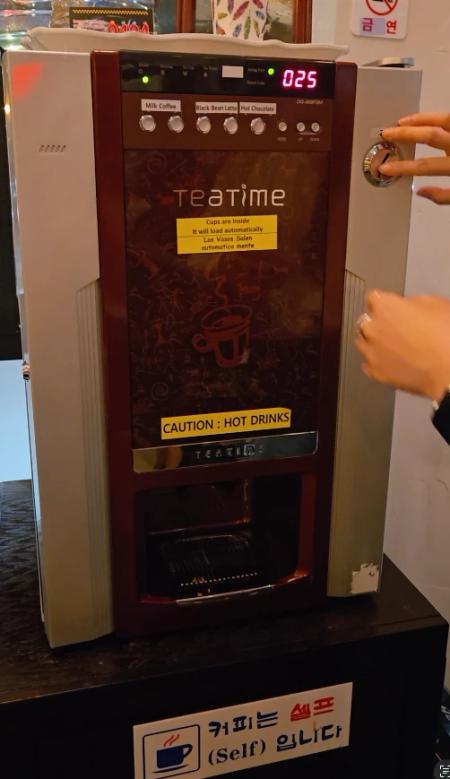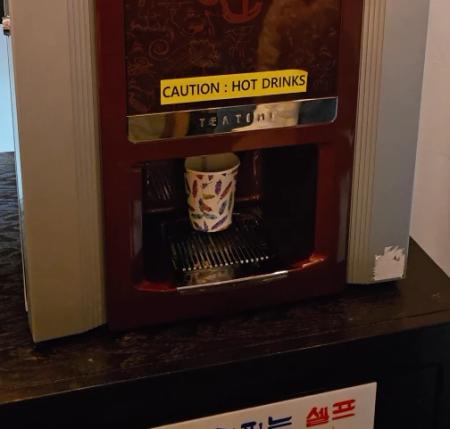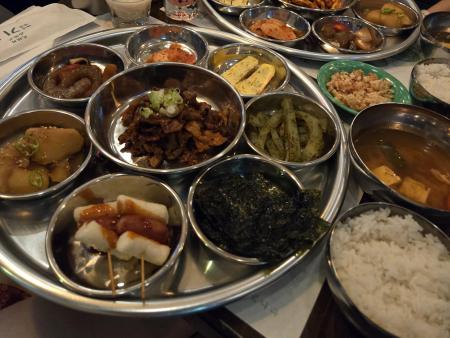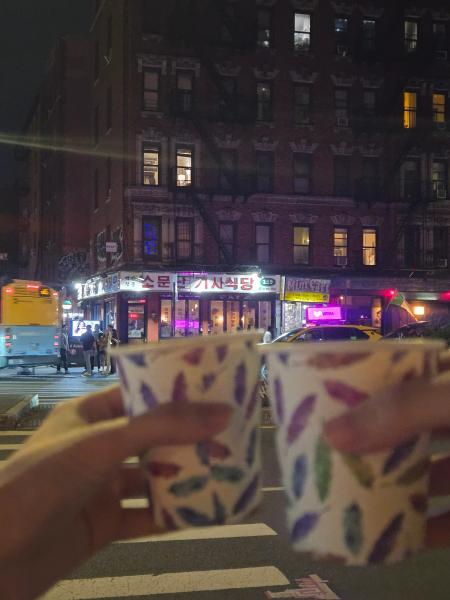Kisa
"A taste of Retro Korea's "driver's restaurant" in New York."
(5) default ratingBy Food and Spot, March 14, 2025

A Taste of Korea’s “Driver’s Restaurants” in the Lower East Side New York
At 205 Allen Street in New York’s Lower East Side, a nostalgic, retro-style Korean restaurant - Kisa sikdang - has opened. When I first heard the news, I honestly couldn’t believe it. A Kisa sikdang in New York? Even in Korea, these driver’s restaurants are becoming harder to find, slowly disappearing as modern dining trends take over. So to see one open right here in the heart of one of the world’s busiest cities - New York City - is not only surprising, it’s deeply fascinating. It reminds me of how food can be so much more than just a meal; it can be a time machine, a cultural capsule, a comforting echo of memories and places.
This restaurant is run by three partners - the same creative team who first launched the well-loved “C as in Charlie,” which is also located in the Lower East Side. I used to go there all the time when it first opened, and I can honestly vouch for how amazing the food was. From the quality of the ingredients to the thoughtful presentation, everything was always on point. I’ve been meaning to go back and properly take some photos and write a full review - it’s long overdue.

When you think of a kisa sikdang, you picture a humble, old-school roadside eatery in Korea. These spots were traditionally places where taxi drivers or long-haul drivers would stop in for a quick, affordable, and hearty meal before hitting the road again. Think of it as Korea’s version of a comforting roadside diner - a place that’s not fancy, but full of soul. Kisa has managed to capture that exact atmosphere and vibe through its intentional design and decor. Inside, there’s a retro coffee machine that one of the owners told me they imported all the way from Korea. There are old-school ceiling fans, handwritten menus on the wall, and even a tiny CRT TV mounted in the corner. Every element feels like it’s been lovingly curated to evoke a very specific kind of nostalgia.


Side Dishes from Korean Food Culture
In Korea, these kisa sikdang restaurants often serve what’s known as “baekban” meals. The concept is simple yet generous: a bowl of steamed white rice, a main dish, and a variety of banchan (side dishes), all served together as a single set.
For those who aren’t familiar with Korean food culture, you might be thinking:
“If all of these side dishes are included, won’t it be super expensive?”
The answer is - absolutely not! It’s actually one of the best aspects of Korean cuisine. The idea is rooted in hospitality, generosity, and balance. You get multiple small dishes that offer a range of textures and flavors—salty, spicy, sour, savory—all of which complement your main dish.

In fact, I remember the first time I took one of my American friends to a Korean BBQ place. As the banchan kept arriving, they looked genuinely confused and turned to the server saying:
“We didn’t order all of this…”
It made me laugh, but also reminded me of how unique and unfamiliar Korean dining customs can be to first-timers. It’s this kind of cultural surprise that I love introducing to friends.
Of course, since we’re in New York City, the pricing may feel slightly higher compared to the original kisa sikdang spots back in Korea. But it’s all relative. In Korea, you might get a full baekban set for a fraction of the price. However, if you compare Kisa to other NYC restaurants—especially in Manhattan—it’s actually still a great deal. Most restaurants here charge extra for even the simplest side dishes, so the fact that these are included makes it feel very generous.
What We Ordered
The menu at Kisa is refreshingly simple. You choose one of four main dishes, and it comes with a generous spread of side dishes. The four options are:
- Bulgogi (marinated beef)
- Spicy Pork
- Stir-fried Squid
- Bibimbap
Each set meal costs $32. While it might sound pricey compared to Korea, the portion sizes are satisfying, and the quality of ingredients is high.
Here’s what we ordered:
Spicy Pork
Jeyuk bokkeum (spicy stir-fried pork) is one of those dishes that instantly feels like home to many Koreans. It’s comforting, savory, and packed with flavor. Kisa’s version felt intentionally balanced—not overly spicy, which makes it more approachable for a wider audience, including those who may not be used to Korean heat levels. The pork was tender, the sauce was rich and slightly sweet, and it paired beautifully with the rice. Honestly, this dish rarely disappoints, and Kisa’s take was no exception.
If you’re far from NYC and want to recreate the experience at home, check out our simple spicy pork recipe. It’s one of the easiest Korean recipes to master, and so satisfying to eat.
Stir-fried Squid
Now, this was a surprise hit. Ojingeo bokkeum (spicy stir-fried squid) is a dish that’s easy to mess up—squid can get rubbery or have an overpowering smell if not handled properly. But Kisa nailed it. The squid was tender, the sauce was spicy but not overwhelming, and there was a slight sweetness that balanced everything perfectly. I actually ordered the spicy pork (out of habit), but after tasting my friend’s squid, I had instant regret. It was that good.
Both dishes also paired wonderfully with a bottle of makgeolli (Korean rice wine). The slightly tangy, milky drink really brings out the depth of the flavors. If you haven’t tried makgeolli with savory Korean food yet, you’re missing out.
How Was It?
In a word? Delicious. Everything we tried was flavorful and satisfying. But more than just the taste, what made the experience special was the emotional connection. The decor, the old-school coffee machine, the tiny details that mirrored what I remembered from gisa sikdang visits back in Korea—it all felt incredibly thoughtful. Eating this kind of food in a setting that transported me to another time and place… it almost brought tears to my eyes.
And speaking of nostalgia, I couldn’t leave without trying their signature 25-cent coffee from that vintage machine.

It’s a tiny paper cup of old-school Korean-style coffee—slightly sweet, slightly bitter, and full of charm. Something about sipping that in New York, of all places, made the moment feel even more surreal.
Final Thoughts: Should You Go?
Without a doubt—yes. At least once.
Kisa is already a popular destination. It has been featured in TV shows, food magazines, digital articles, and even interview pieces. At one point, the lines were so long that they didn’t take reservations at all. Now, they’ve started accepting limited reservations (thankfully!), though it’s still not the easiest place to walk into spontaneously. But it’s worth the effort. Whether you’re Korean and feeling homesick, or you’re simply curious about Korean comfort food in a beautifully nostalgic setting, Kisa delivers a one-of-a-kind experience.
So if you find yourself in the Lower East Side, carve out some time to visit. Go hungry, bring a friend, and let yourself be transported.
Leave a comment
Comments
No comments yet.